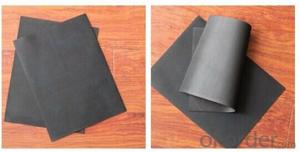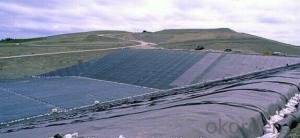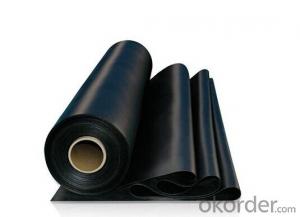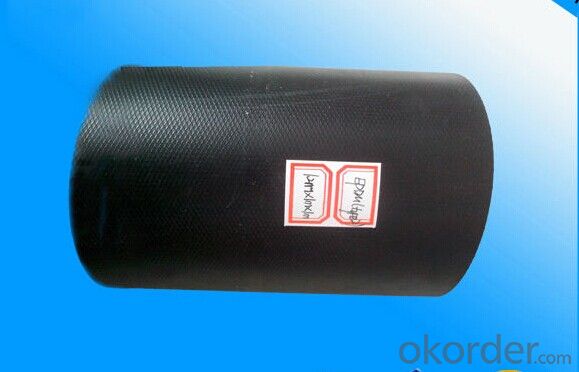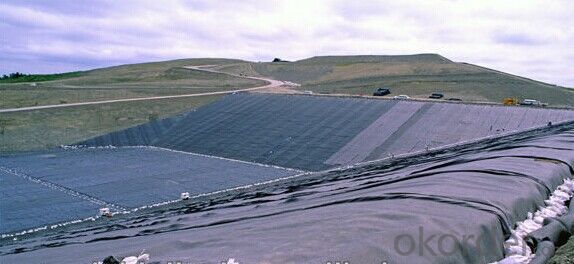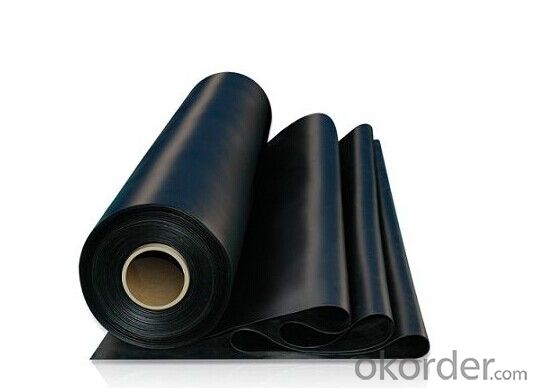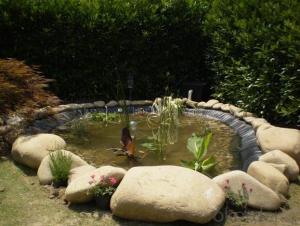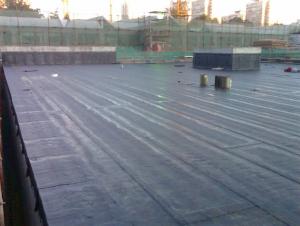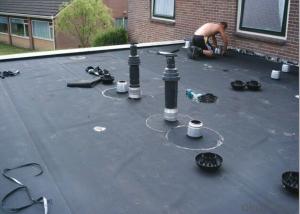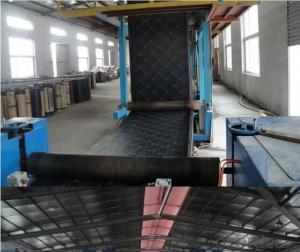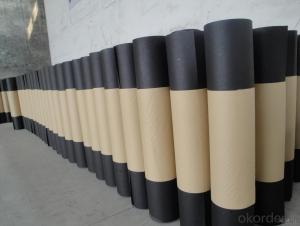Black EPDM Rubber Flat Roofing Material
- Loading Port:
- Qingdao
- Payment Terms:
- TT OR LC
- Min Order Qty:
- 2000 m²
- Supply Capability:
- 100000 m²/month
OKorder Service Pledge
OKorder Financial Service
You Might Also Like
EPDM Waterproof Membrane
Specifications
ASTM Standard D-7465,D-4367
thickness:1.2mm,width:4m,length:20m
eco-friendly
widely exported to Australia, UK,Argentina etc.
1.2mmEPDM rubber flat roofing material.
EPDM waterproof membrane is of high elasticity among high polymer waterproof materials and becomes a world-popular waterproofing material. EPDM waterproof membrane is made from ternary ethylene-propylene rubber, which is designed for waterproofing of exposed and non-exposed applications. EPDM waterproof membrane production adopts the world-advanced equipment of cold feeding extrusion and continuous vulcanization technology.
Features
Excellent weatherability, durability and size stability
Good adaptability to high and low temperature, UV resistant and anti-corrosion
High tensilestrength and good elongation, accommodating substrate movement
Easy installation, environment friengly
Good rooting penetration resistance
Service life up to 50 years
Applications
Subways, tunnels, roofs, basement
Industrial and civil building waterproofing, like water reservior, bridge, dam, etc.
Geosynthetic liner for swimming pool, channels, irrigation system
Especially suitale for projects with high requirements in durability, anti-corrosion and deformation
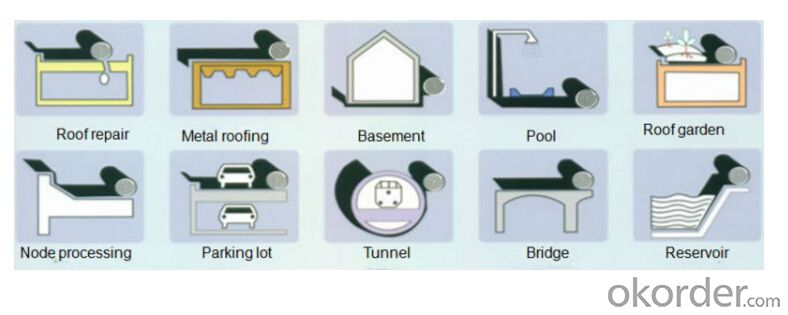
Application Method:
1. Make sure the roof deck smooth,clean and dry(Moisture<9%),then apply the surface of roof deck homogeneously with a kind bitumen paint till dry to start application.
2. There are two methods in application:
One way is by heating and melting method---Heat the polyethylene film of the membrane and roof deck surface by heating and melting method to be nearly melted(not flowing),then install the membrane fully bonded to the roof deck with overlaps of 5-10cm.
The other way is by cold adhesive method---Pour the cold adhesive homogeneously on the roof deck then roll the membrane to install it to be fully sticked to roof deck.
By heating and melting method and by cold adhesive can be used in alternation in application as requested.
3. After application,a full serious inspection is required to make sure no air bubble,no fold,no falling away etc to guarantee the waterproof life.
Attentions for Construction:
Construction shall not be carried out in rain, snow or over 5 degree wind weather; There shall be sufficient safety protective facilities in construction site, place firefighting devices according to stipulations
1. Clean the substrate using broom or high pressure dusty cleaner
2. Apply primer
3. Heat the membrane bottom using a high temperature flame gun
4. Push forward while the primer and membrane oil melted
5. Use a roller to push hard the membrane surface to ensure it stick firmly
Some photos:
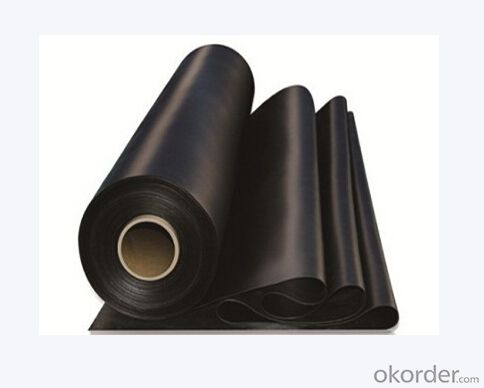
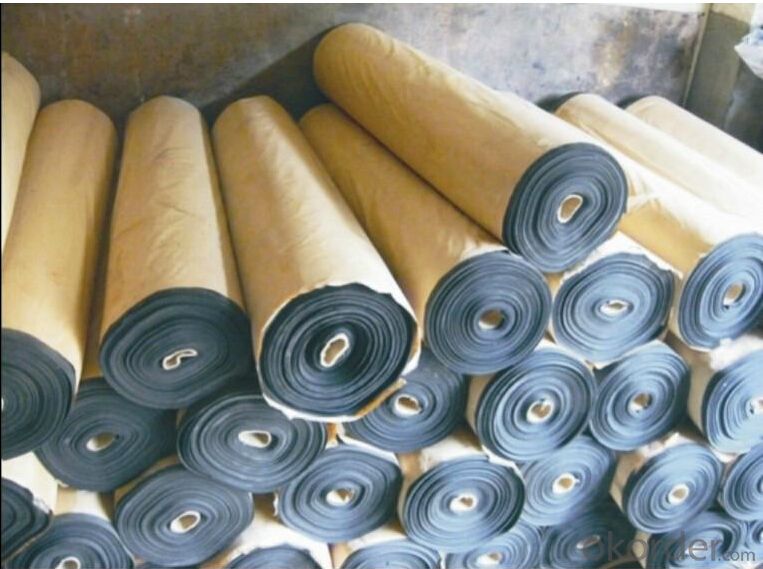
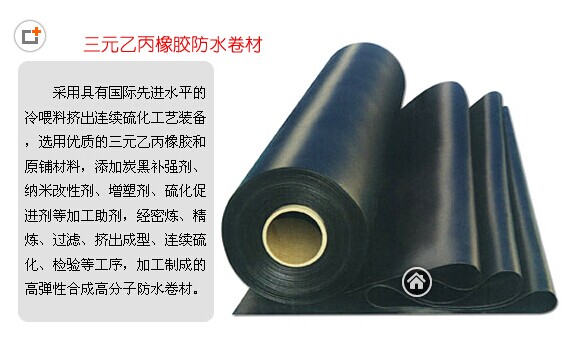
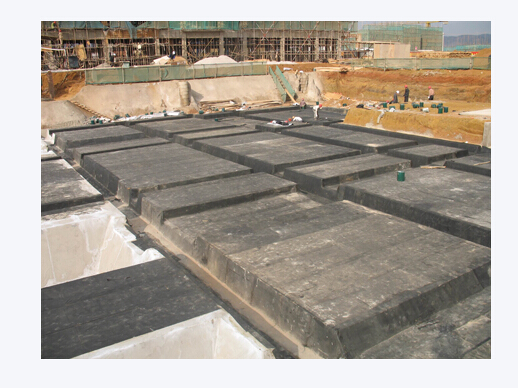
- Q: Waterproof building materials after the construction of drums, bubble is what reason?
- Reason 2: Construction, due to the construction of the membrane waterproof layer of paving is not true, so that part of the empty, remain in which to form a bubble. Control measures: in the asphalt waterproofing membrane construction, the first surface of the coil clean. When laying the web, the mastic should be painted evenly and carefully compaction work to enhance the cohesive force between the web and the base, the web and the web. High polymer modified asphalt waterproofing membrane construction, the flame heating to be uniform, full, moderate. Paving to roll forward while hot, while rolling with a pressure roller to exclude the air below the coil.
- Q: Can a waterproofing membrane be used for a basement?
- Basements can indeed benefit from the use of a waterproofing membrane. It is highly recommended to employ this method in order to avoid water infiltration and the accumulation of moisture. A waterproofing membrane consists of a thin layer of material that is applied to the walls and floor of the basement, serving as a barrier against water. This layer acts as a protective shield, preventing water from penetrating the walls and causing harm to the foundation and interior of the basement. Furthermore, the use of a waterproofing membrane can also decrease the likelihood of mold and mildew growth, as it maintains a dry and moisture-free environment in the basement. In conclusion, the utilization of a waterproofing membrane is an effective remedy for ensuring waterproof basements and providing a safe and dry living space.
- Q: Are there any specific tools or equipment required for installing a waterproofing membrane?
- Yes, there are specific tools and equipment required for installing a waterproofing membrane. Some of the essential tools and equipment include: 1. Protective gear: This includes gloves, goggles, and a face mask to protect yourself from any harmful chemicals or fumes. 2. Cleaning equipment: Before installing the membrane, the surface needs to be clean and free from any dust, debris, or loose particles. Therefore, you may need a broom, vacuum cleaner, or pressure washer to clean the area properly. 3. Waterproofing membrane: The specific type of membrane will depend on the project requirements, but it is essential to have the appropriate membrane material and enough coverage to ensure a proper seal. 4. Primer: In some cases, a primer may be needed to enhance adhesion between the surface and the membrane. The primer type will depend on the surface material and the membrane being used. 5. Application tools: These tools are used to apply the membrane onto the surface. Common tools include brushes, rollers, or sprayers. The choice will depend on the type of membrane and the size of the project. 6. Seam tape: If the waterproofing membrane requires seams, a seam tape will be needed to ensure a watertight seal at the joints. The tape should be compatible with the membrane material. 7. Adhesive or adhesive tape: Some waterproofing membranes require an adhesive to bond them to the surface. Alternatively, adhesive tape can be used for self-adhesive membranes. 8. Cutting tools: Depending on the shape and size of the area to be waterproofed, you may need cutting tools such as utility knives or scissors to trim the membrane to the desired size and shape. 9. Caulking gun: A caulking gun is necessary for applying sealant or caulk to fill any gaps or cracks in the surface before installing the membrane. 10. Drying equipment: After the membrane is installed, it may require a certain amount of time to dry or cure. Fans or dehumidifiers may be needed to accelerate the drying process, depending on the specific membrane and environmental conditions. It is important to consult the manufacturer's guidelines or seek professional advice to ensure you have all the necessary tools and equipment for a successful installation of the waterproofing membrane.
- Q: Can a waterproofing membrane be used on precast concrete block surfaces?
- Precast concrete block surfaces can benefit from the application of a waterproofing membrane. These membranes are commonly used to safeguard below-grade structures, like basements and foundations, from water infiltration. When constructing these structures, precast concrete blocks are frequently utilized, and the use of a waterproofing membrane can prevent water from seeping into the concrete and causing harm. The membrane acts as a barrier, prohibiting water from passing through while still allowing the concrete to breathe and release any accumulated moisture. Furthermore, waterproofing membranes can enhance the overall durability and lifespan of precast concrete blocks by shielding them from moisture-related problems such as cracking, spalling, and corrosion. It is crucial to select a waterproofing membrane that is specifically designed for below-grade applications and is compatible with concrete surfaces to ensure proper adhesion and long-term efficacy.
- Q: Can waterproofing membranes be used in wet areas like bathrooms?
- Yes, waterproofing membranes can indeed be used in wet areas like bathrooms. In fact, it is highly recommended to use waterproofing membranes in bathroom areas to prevent water damage and leakage. These membranes are specifically designed to create a barrier against moisture, ensuring that water does not seep through the walls, floors, or other surfaces of the bathroom. By applying a waterproofing membrane, you can effectively protect the underlying structure from water damage, mold growth, and other issues caused by prolonged exposure to moisture. This is especially important in wet areas like bathrooms where water is constantly present. Waterproofing membranes are available in various forms such as sheet membranes, liquid membranes, and even pre-formed shower trays. They can be applied to walls, floors, shower enclosures, and other surfaces to create a watertight seal. It is crucial to properly install and maintain the waterproofing membrane as per manufacturer guidelines to ensure its effectiveness and longevity. Therefore, if you are considering renovating or building a bathroom, using waterproofing membranes is highly recommended to ensure a durable and moisture-resistant space.
- Q: Can a waterproofing membrane be used for a bridge?
- Yes, a waterproofing membrane can be used for a bridge. Waterproofing membranes are commonly used in bridge construction to prevent water infiltration and protect the structure from deteriorating due to moisture. These membranes act as a barrier against water and can significantly extend the lifespan of bridges by preventing corrosion and structural damage caused by water exposure.
- Q: Can a waterproofing membrane be used on precast concrete block surfaces?
- Yes, a waterproofing membrane can be used on precast concrete block surfaces. It helps to prevent water penetration and protects the structure from potential damage caused by moisture.
- Q: Can waterproofing membranes be painted over?
- Yes, waterproofing membranes can be painted over. However, it is important to use a paint that is compatible with the membrane material and to ensure that the membrane is clean and dry before painting. Additionally, it is advisable to consult the manufacturer's guidelines or seek professional advice to ensure proper adhesion and longevity of the painted surface.
- Q: Are waterproofing membranes effective in preventing water damage?
- Waterproofing membranes prove highly efficient in the prevention of water damage. Crafted with the intention of creating a barrier that hinders the infiltration of water and the penetration of moisture into surfaces like roofs, basements, and foundations, these membranes significantly reduce the risk of water damage arising from leaks, seepage, or condensation. Typically composed of durable materials such as rubber, PVC, or bitumen, waterproofing membranes possess a high resistance to water and moisture. Various application methods, including spraying, rolling, or adhering with a special adhesive, ensure these membranes secure surfaces with a seamless and watertight seal, effectively blocking the seepage of water. Furthermore, waterproofing membranes offer additional advantages beyond their water damage prevention capabilities. They contribute to enhanced energy efficiency by reducing heat loss or gain and safeguard against the growth of mold and mildew. Moreover, these membranes extend the lifespan of protected surfaces by countering water-related deterioration, such as corrosion or rot. It is crucial to acknowledge that the efficacy of waterproofing membranes relies on proper installation and regular maintenance. Any flaws or damage in the membrane can compromise its ability to prevent water damage. Therefore, engaging professional contractors experienced in waterproofing is essential to guarantee correct application and regular inspection for signs of wear or damage. Overall, waterproofing membranes represent a dependable and efficient solution for averting water damage. They offer a long-lasting and sturdy defense against water infiltration, preserving the structural integrity of buildings and avoiding costly repairs stemming from water-related issues.
- Q: Can a waterproofing membrane be used for swimming pool decks or patios?
- Yes, a waterproofing membrane can be used for swimming pool decks or patios.
Send your message to us
Black EPDM Rubber Flat Roofing Material
- Loading Port:
- Qingdao
- Payment Terms:
- TT OR LC
- Min Order Qty:
- 2000 m²
- Supply Capability:
- 100000 m²/month
OKorder Service Pledge
OKorder Financial Service
Similar products
Hot products
Hot Searches
Related keywords
